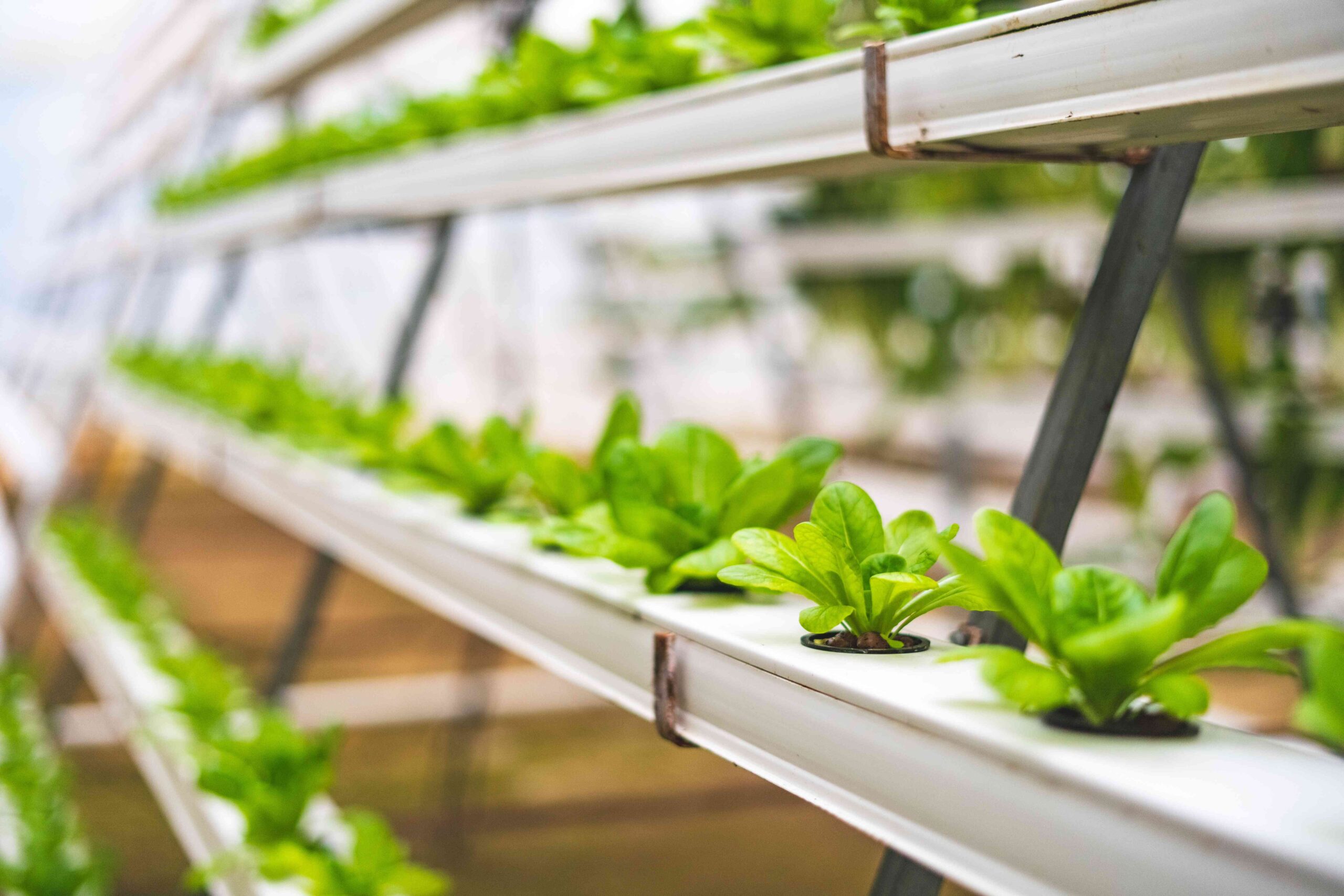Hydroponic Planter
In recent years, the world of gardening has witnessed a significant transformation with the advent of hydroponic planters. These innovative systems have revolutionized traditional gardening methods, enabling individuals to grow plants indoors without the need for soil. By providing a controlled environment and precise nutrient delivery, hydroponic planters offer numerous benefits that have captured the attention of gardening enthusiasts worldwide.
1. Introduction: What is a Hydroponic Planter?
A hydroponic planter is a modern gardening system that allows plants to grow in a soil-less environment. Instead of relying on traditional soil-based cultivation, hydroponic planters utilize nutrient-rich water solutions to nourish the plants directly. By providing a controlled environment with optimal lighting, temperature, and nutrient levels, these systems accelerate plant growth and maximize yields.
2. The Advantages of Hydroponic Planters
Hydroponic planters offer a range of benefits that make them an attractive choice for gardening enthusiasts. Here are some key advantages:
Maximized Growth Potential:
Hydroponic systems provide plants with the ideal conditions for growth, resulting in faster growth rates and larger yields compared to traditional gardening methods.
Water Efficiency:
Hydroponic planters use significantly less water than conventional gardening, as water is recycled within the system. This makes hydroponics a sustainable option in regions facing water scarcity.
Year-Round Cultivation:
With hydroponic planters, you can grow plants all year round, regardless of the external climate or season. This allows for continuous harvests and greater self-sufficiency.
Space Optimization:
Hydroponic systems can be designed vertically, making efficient use of space. This is particularly beneficial for urban dwellers or those with limited garden space.
Reduced Dependency on Pesticides:
By controlling the growing environment, hydroponic planters minimize the risk of pests and diseases, reducing the need for harmful pesticides.
3. Setting Up Your Hydroponic Planter
Before embarking on your hydroponic gardening journey, it’s important to set up your planter correctly.
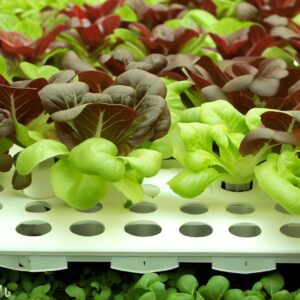
Gathering the Necessary Materials
To assemble your hydroponic planter, you will need the following materials:
- Planter reservoir
- Growing containers (net pots, grow bags, or trays)
- Growing medium (Rockwool, perlite, clay pellets, or coco coir)
- Nutrient solution
- pH testing kit
- Water pump
- Air pump and air stones
- Grow lights (LED or fluorescent)
- Timer
- Thermometer and hygrometer
Choosing the Right Location
Select a suitable location for your hydroponic planter. Ensure it receives adequate light, has a stable temperature, and is easily accessible for maintenance.
Assembling the System
Follow the manufacturer’s instructions to assemble the hydroponic planter, connecting the water pump, air pump, and grow lights. Set up the reservoir and growing containers according to the chosen design.
Preparing the Nutrient Solution
Prepare a nutrient solution by mixing the appropriate hydroponic nutrients with water. Ensure the solution is properly balanced and adjusted to the desired pH level.
4. Selecting Plants for Hydroponic Cultivation
Hydroponic planters can accommodate a wide variety of plants, but certain types thrive particularly well in this system. Consider the following options when selecting plants for hydroponic cultivation:
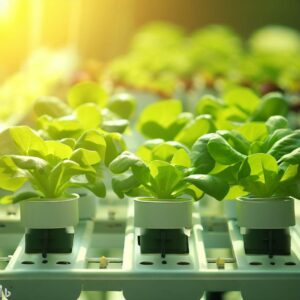
Leafy Greens and Herbs
Plants such as lettuce, kale, spinach, and basil are well-suited for hydroponic gardening. Their quick growth and high demand make them popular choices among hydroponic enthusiasts.
Fruiting Plants
Tomatoes, cucumbers, peppers, and strawberries are examples of fruiting plants that can be successfully grown in hydroponic systems. These plants require proper support and trellising to maximize their yields.
Flowers
Hydroponic planters also allow for vibrant flower cultivation. Marigolds, petunias, and pansies are just a few examples of flowers that flourish in hydroponic environments, providing a colorful addition to your indoor or outdoor space.
5. Maintaining Your Hydroponic Garden
To ensure the health and productivity of your hydroponic garden, proper maintenance is crucial. Consider the following key aspects:
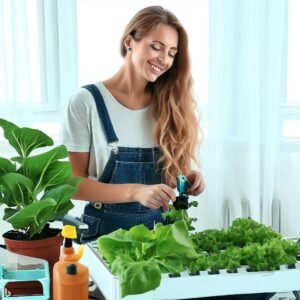
Monitoring pH Levels
Regularly test the pH level of your nutrient solution to maintain optimal conditions for plant growth. Adjust the pH as needed using pH-up or pH-down solutions.
Nutrient Solution Management
Monitor the nutrient solution’s strength and adjust it according to the growth stage of your plants. Maintain the right balance of essential nutrients to promote healthy development.
Watering and Light Requirements
Provide your plants with adequate water and ensure they receive the appropriate amount of light for their specific needs. Adjust the lighting duration and intensity based on the growth stage of your plants.
Preventing Pests and Diseases
Even though hydroponic systems are less prone to pests and diseases, it’s important to remain vigilant. Regularly inspect your plants for any signs of infestation or disease, and take appropriate measures to control and prevent their spread.
6. Expanding Your Hydroponic System
Once you’ve mastered the basics of hydroponic gardening, you may want to expand your system and explore advanced techniques. Consider the following possibilities:
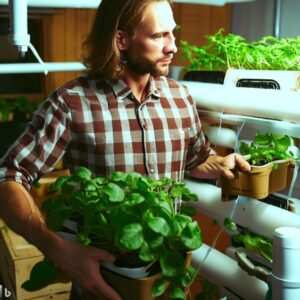
Scaling Up Your Operation
If you have the space and resources, you can scale up your hydroponic operation to grow a larger variety of plants or increase the quantities produced. Expand your garden by adding more planters or utilizing vertical farming methods.
Automating Your Setup
Introduce automation to your hydroponic system to streamline the growing process. Automated features can include timed nutrient delivery, lighting schedules, and climate control, ensuring optimal conditions for your plants with minimal effort.
Advanced Techniques and Technologies
Explore advanced hydroponic techniques such as aeroponics, nutrient film technique (NFT), or deep-water culture (DWC). These methods offer unique advantages and may suit specific plant types or growth requirements.
7. Environmental Considerations
Hydroponic gardening aligns well with environmental sustainability. Consider the following practices to make your hydroponic system more eco-friendly:
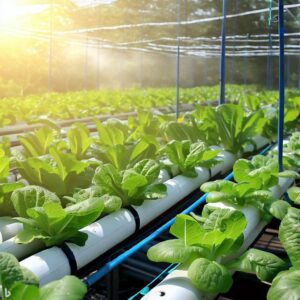
Water Conservation
Implement water-saving measures such as recirculating the nutrient solution, using water-efficient irrigation systems, and collecting rainwater for your hydroponic setup.
Energy Efficiency
Optimize energy consumption by utilizing energy-efficient LED grow lights, programmable timers, and sensors to regulate lighting and environmental conditions.
Sustainability and Organic Practices
Explore organic hydroponic gardening techniques, such as using organic nutrient solutions and natural pest control methods. Embrace sustainable practices to reduce your environmental impact.
8. Troubleshooting Common Issues
While hydroponic gardening offers many benefits, it’s essential to be aware of potential challenges that may arise. Here are some common issues and their solutions:

Nutrient Imbalances
Monitor the nutrient solution’s composition and adjust it as needed. Keep a close eye on nutrient deficiencies or excesses that may affect plant health, growth, and productivity.
Root Diseases
Maintain proper hygiene and sanitation in your hydroponic system to prevent the development and spread of root diseases. Regularly inspect the roots for signs of rot or infection and take immediate action.
Temperature Fluctuations
Maintain a stable temperature within your hydroponic environment. Extreme temperature fluctuations can stress plants and affect their growth. Use insulation, ventilation, and cooling methods to regulate the temperature.
Light Insufficiency or Excess
Ensure your plants receive the correct amount and intensity of light. Insufficient light can lead to weak growth, while excessive light can cause heat stress or leaf damage. Adjust the distance between the light source and plants accordingly.
9. Harvesting and Enjoying Your Hydroponic Produce
One of the most rewarding aspects of hydroponic gardening is harvesting and enjoying your homegrown produce. Follow these steps to make the most of your hydroponic harvest:

Harvesting Techniques
Each plant has specific harvesting requirements. Learn the proper harvesting techniques for your chosen crops to maximize flavor, texture, and nutritional value. Harvest at the right stage of maturity for each plant.
Recipes and Culinary Inspiration
Experiment with different recipes and culinary creations using your freshly harvested hydroponic produce. Enjoy the vibrant flavors, crisp textures, and nutritional benefits of your homegrown fruits, vegetables, and herbs.
Sharing the Bounty
Consider sharing your hydroponic bounty with friends, family, or local communities. Spread the joy of homegrown, nutrient-rich produce and inspire others to explore hydroponic gardening.
10. Conclusion
Hydroponic planters have transformed the way we approach gardening by offering a soil-less, controlled environment that promotes optimal plant growth. From maximizing yields and water efficiency to enabling year-round cultivation and space optimization, hydroponic systems have numerous advantages. By following the setup process, selecting appropriate plants, and implementing proper maintenance techniques, you can embark on a successful hydroponic gardening journey. Embrace the possibilities, explore advanced techniques, and enjoy the rewards of your hydroponic harvest.
Frequently Asked Questions (FAQs)
Q: Can I grow any type of plant in a hydroponic planter?
A: While many plants thrive in hydroponic systems, some are more suitable than others. Leafy greens, herbs, and fruiting plants are commonly grown hydroponically.
Q: How often should I check and adjust the nutrient solution in my hydroponic planter?
A: Regularly monitor the nutrient solution’s strength and pH levels. Adjust as needed based on the specific requirements of your plants.
Q: Do hydroponic plants require less water than traditional soil-based plants?
A: Yes, hydroponic systems are generally more water-efficient than traditional gardening methods due to water recirculation within the system.
Q: Can I use organic practices in hydroponic gardening?
A: Yes, organic hydroponic gardening is possible. Use organic nutrient solutions and natural pest control methods to adhere to organic principles.
Q: Can I expand my hydroponic system over time?
A: Absolutely! As you gain experience, you can scale up your hydroponic operation, automate your setup, or explore advanced techniques to expand your garden.


